index[Calixto][Description] [Axolotl FAQ]  [My Axolotls] [Habitat] [Feeding] [Health] [References] [Links] [Genetics] contactaxolotls@yahoo.com-or- Sign The Guestbook version98.12.02visitstravelDa Homepagelegal© 1996-1998Chris Eng All Rights Reserved 
|
AnatomyAxolotls typically have about 50 vertebrae. The tail region accounts for 70% of them. Here is a diagram of an axolotl skeleton, side view. The lower and upper jaw of the axolotl contain fine teeth. However these teeth are used for gripping, as opposed to chewing. Digestion usually takes two to three days to occur and, on occasions, the axolotl passes undigested.HandlingIf you suddenly find your finger inside an axolotl's mouth, wait patiently for it to let go. Do not fight the axolotl, or you may cause it harm. Their teeth are harmless and it is quite amusing to watch the axolotl wrestled then spit your finger out. Also, axolotls are very fragile and you should not handle them unless it is absolutely necessary (i.e. moving it to another container for cleaning). Here is an illustration of the internal anatomy of an axolotl by John R. Quinn.SizeHatchlings are about one-half to three-quarters of an inch in length. Adults can get around 10"-12" in length and weigh over 11 ounces. Mature females are rounder in the abdominal region, because they are filled with eggs. Their cloacas are smaller than the males. Males are slimmer, and their cloacal region is larger because there are jelly glands on both sides of the opening. Sexual maturity is reached anywhere from nine months to two years.SexMales mature sooner than females. Accurate sexing is easily done with mature animals, not immature animals. Factor that influence growth rate: temperature, amount of food fed, and amount of toxins in water. A good estimate of life span in captivity is about fifteen years. There is no data on wild stock but the assumption is that it would be less. Reproductive capabilities slow down after five to seven years for females and eight to ten years for males.TemperatureTemperature is correlated with growth. Keeping a cool temperature habitat not only keeps the axolotls comfortable it also helps to keep harmful bacteria from thriving. Although terrestrial salamanders thrive at 75ºF, axolotl love temperatures of about 60ºF. Axolotls do well at standard room temperature but keep them in a shaded area. In their native habitat, wild axolotls, live in 60º-68ºF water.Oxygen RequirementsProper aeration of the tank will ensure the release of toxic compounds in the axolotl's water. If your filtration system does not allow the constant agitation of the surface water, then a common air-pump equipped with a standard airstone would suffice in maintaining the dissolved oxygen content of the water at over 3mg/l.Oxygen ConsumptionThey collect oxygen primarily through their skin, gills and from the air they gulp above the surface of the water. I keep the water height about as high as the axolotls are long, which forces them to exert some effort when they go up to "gulp" air. Although they have rudimentary lungs, studies have shown that "gulping" might be a innate reaction to supplement their oxygen when oxygen levels are low in their natural habitat. There is an inverse relationship on obtaining oxygen with their lungs when O2 levels are low and their gills when O2 levels are comfortable. If there are oxygen capturing problems, the external gills may get fluffier in response to the reduced oxygen. Most of their oxygen requirements are taken cutaneously.Chemical ToxicityLike fish, axolotls are prone to ammonia toxicity. This includes too much ammonium, nitrate or nitrite in the water system. Symptons of this include the attack of the skin of the external gills, cloudy eyes, and visible infection on the skin of the animal. Chlorine, chloramine, pH, heavy metals and TOC's can all be brought under control. However, ammonia, ammonium, nitrate, and nitrite can suddenly change levels in the axolotls housing and must be routinely monitored and brought under control. Also O2 levels can change suddenly and dramatically.Ammonia and ChloramineAmmonia can be taken care of, if you have an established filtration system. See First Section of Axolotl Habitat. Chlorine in the water will dissipate if tap water is left in a bucket overnight. Chloramine, a very stable compound, can be removed safely with special formulas that can be purchased at any aquarium store.Eliminate AmmoniaAnother way to remove ammonia NH3 from the water is to lower the pH of the water below neutral. A good range would be between 6.1 and 6.9. You can purchase buffer solutions and test kits for this. This converts ammonia to less-toxic ammonium ion NH4+Water QualityIf you suspect any health problems for your axolotl, immediately replace the water with clean water (dechlorinated, deammoninated and dechloraminated). Never use deionized water since they do not contain essential minerals that the axolotls need.Water Test KitsIt is a good idea to save some of the water, so that you may run a water test on it. Most aquarium stores will run an ammonia and pH test for you, free of charge.RegenerationAxolotls are well known for their ability to regenerate body parts. They are able to regenerate their gills, limbs, tail, damaged skin tissue, heart, liver, kidney tissue, parts of their peripheral nervous system, and parts of their central nervous system. Time of regeneration is a factor of age versus time.Regenerative PartsA two inch animal might regenerate an entire limb in a month, while an adult may never regenerate a lost limb but will regenerate quickly damaged skin tissue. Adults should regenerate the entire tail, skin, muscle and all, but it will take a few months.Slime CoatA common cause of slime-coat damage and gill damage is from high flow rates from filters or similar apparati. Too high a flow rate from a filter outflow will damage the skin of the Axolotl, as well as gill loss.Juvenile ConsiderationsWhen raising juveniles and if you are using a filter, you must make sure that the intake suction and outflow pressure is set up that it does not harm the axolotl. Axolotl limbs and gills are very fragile and care must be taken not to damage those parts.Mercurochrome®Axolotls, like all amphibians, are prone to bacterial and fungus infections. The standard reaction would be to use Mercurochrome® at the first sign of infection. This is readily obtained at your local drug store or pharmacy since it is a topical antiseptic. Put your axolotl in a separate non-filtered container, if necessary. Introducing Mercurochrome® to an established filter system will destroy all the beneficial bacteria colonies within. The standard dose from Exotic Pet Medicine 1, is to place the amphibian in a 3 mg/L solution for 72 hours. The Indiana University Axolotl Colony uses a smaller does. Enough crystals are dissolved until the water is a light-peach color. I have used this solution on Calixto, when she suffered damage to her gills and Artemis when I suspected a fungal infection on his gills. Both animals were cured within 48-72 hours.Recent Mycosis - Saprolegniasis?June 1997 - I noticed white cottony patches on Artemis' body. The standard Mercurochrome® treatment only helped to remove the patches. However, after treatment, the patches appeared again. After another higher concentration Mercurochrome® bath, all three axolotls were in the same tank, but Artemis was the only one affected. I am suspecting Saprolegnia, Achlya or Aphanomyces as the cause. They attack the skin through traumatized epidermal layers. I used some Sulfa medication (Sulfamethazine, -thiazole, -diazine and -merazine compound), at 150mg/10 gallons H20.Salt BathDuring the time of infection, immersing the axolotl in a salt bath for about ten minutes is good for epidermal attacks. Use a solution of 25 grams NaCl per liter of H20. Non-metric measurements are 3.3 ounces of salt per gallon of water. DuhonSecondary InfectionArtemis died of a secondary infection that was not treated due to him being left unsupervised for a week. The culprit turned out to be a gram-positive infection. Margarita, who was sharing the same tank with Artemis and Bubba, communicated the infection to Chong. Chong died during the same week as Artemis. Margarita was cured with Marycn® and MarOxy®, which are specific cures for the gram-positive attack. Bubba, who also carried the infection, has not displayed any primary infection, and Calixto has not either. To be sure, they were treated with a tablet of Marycn®.Importance of HealthThe healthiest axolotls did not get infected with the fungus (Bubba and Calixto). Artemis, who was always in questionable health, was easily infected. Chong, who suffered from Nitrate poisoning not too long ago, was easily infected as well. Margarita, was slightly infected, but was in overall good health at the time.Water Quality - pH, KH, Nitrogen CycleAs briefly discussed in Axolotl Habitat, maintaining good water quality lies in the control of pH, carbonate hardness (buffering), and the establishment of the nitrogen cycle. |
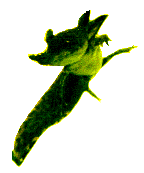 margarita margarita 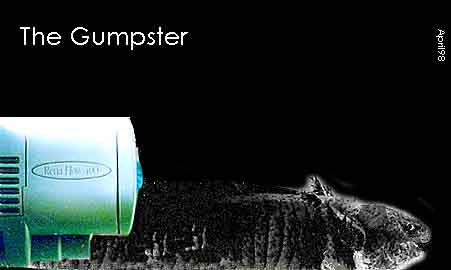  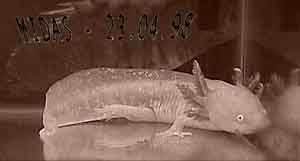 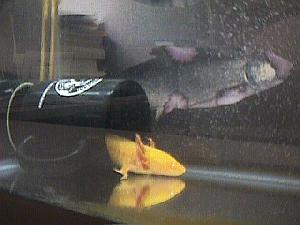  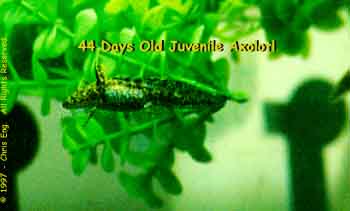  |